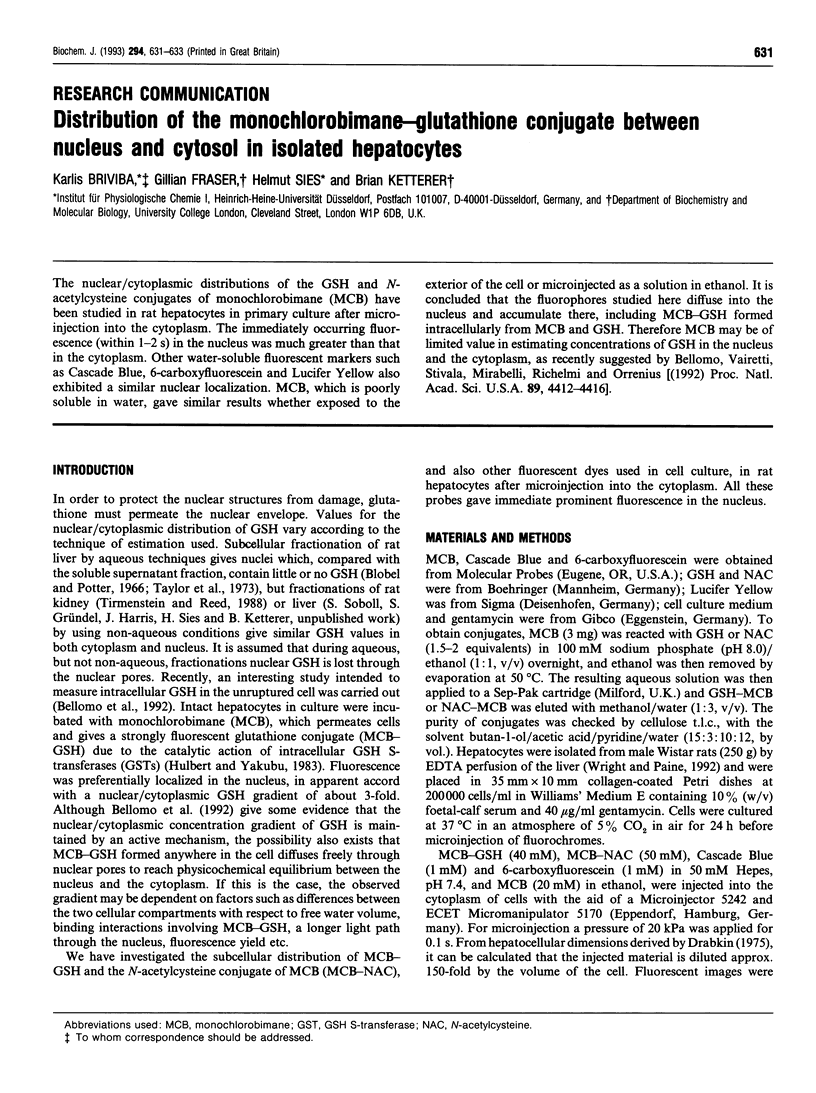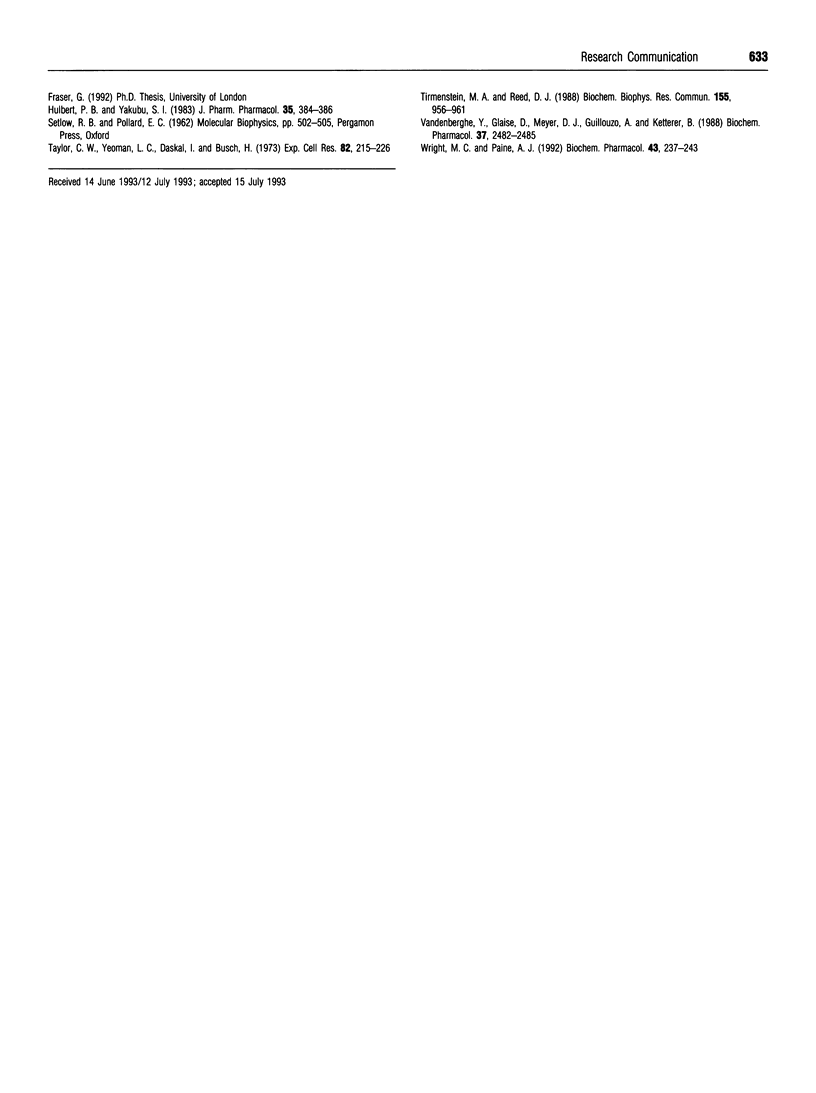Abstract
The nuclear/cytoplasmic distributions of the GSH and N-acetylcysteine conjugates of monochlorobimane (MCB) have been studied in rat hepatocytes in primary culture after microinjection into the cytoplasm. The immediately occurring fluorescence (within 1-2 s) in the nucleus was much greater than that in the cytoplasm. Other water-soluble fluorescent markers such as Cascade Blue, 6-carboxyfluorescein and Lucifer Yellow also exhibited a similar nuclear localization. MCB, which is poorly soluble in water, gave similar results whether exposed to the exterior of the cell or microinjected as a solution in ethanol. It is concluded that the fluorophores studied here diffuse into the nucleus and accumulate there, including MCB-GSH formed intracellularly from MCB and GSH. Therefore MCB may be of limited value in estimating concentrations of GSH in the nucleus and the cytoplasm, as recently suggested by Bellomo, Vairetti, Stivala, Mirabelli, Richelmi and Orrenius [(1992) Proc. Natl. Acad. Sci. U.S.A. 89, 4412-4416].
Full text
PDF


Images in this article
Selected References
These references are in PubMed. This may not be the complete list of references from this article.
- Bellomo G., Vairetti M., Stivala L., Mirabelli F., Richelmi P., Orrenius S. Demonstration of nuclear compartmentalization of glutathione in hepatocytes. Proc Natl Acad Sci U S A. 1992 May 15;89(10):4412–4416. doi: 10.1073/pnas.89.10.4412. [DOI] [PMC free article] [PubMed] [Google Scholar]
- Blobel G., Potter V. R. Nuclei from rat liver: isolation method that combines purity with high yield. Science. 1966 Dec 30;154(3757):1662–1665. doi: 10.1126/science.154.3757.1662. [DOI] [PubMed] [Google Scholar]
- Drabkin D. L. The environment of function of liver and red blood cells. Ann N Y Acad Sci. 1975 Apr 15;244:603–623. doi: 10.1111/j.1749-6632.1975.tb41557.x. [DOI] [PubMed] [Google Scholar]
- Hulbert P. B., Yakubu S. I. Monobromobimane: a substrate for the fluorimetric assay of glutathione transferase. J Pharm Pharmacol. 1983 Jun;35(6):384–386. doi: 10.1111/j.2042-7158.1983.tb02962.x. [DOI] [PubMed] [Google Scholar]
- Taylor C. W., Yeoman L. C., Daskal I., Busch H. Two-dimensional electrophoresis of proteins of citric acid nuclei prepared with aid of a Tissumizer. Exp Cell Res. 1973 Nov;82(1):215–226. doi: 10.1016/0014-4827(73)90264-4. [DOI] [PubMed] [Google Scholar]
- Tirmenstein M. A., Reed D. J. The glutathione status of rat kidney nuclei following administration of buthionine sulfoximine. Biochem Biophys Res Commun. 1988 Sep 15;155(2):956–961. doi: 10.1016/s0006-291x(88)80589-8. [DOI] [PubMed] [Google Scholar]
- Vandenberghe Y., Glaise D., Meyer D. J., Guillouzo A., Ketterer B. Glutathione transferase isoenzymes in cultured rat hepatocytes. Biochem Pharmacol. 1988 Jun 15;37(12):2482–2485. doi: 10.1016/0006-2952(88)90378-4. [DOI] [PubMed] [Google Scholar]
- Wright M. C., Paine A. J. Evidence that the loss of rat liver cytochrome P450 in vitro is not solely associated with the use of collagenase, the loss of cell-cell contacts and/or the absence of an extracellular matrix. Biochem Pharmacol. 1992 Jan 22;43(2):237–243. doi: 10.1016/0006-2952(92)90283-o. [DOI] [PubMed] [Google Scholar]



